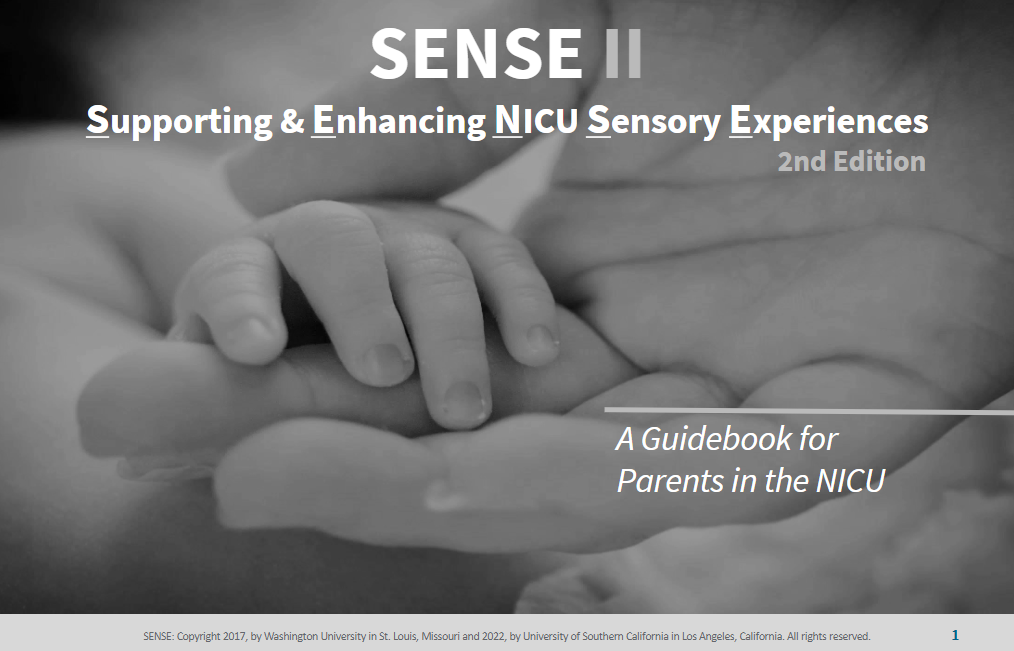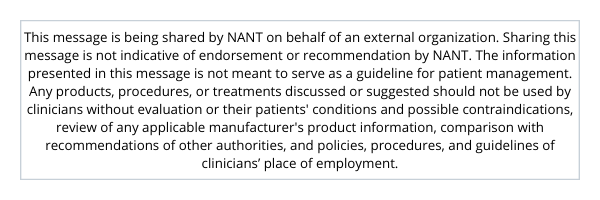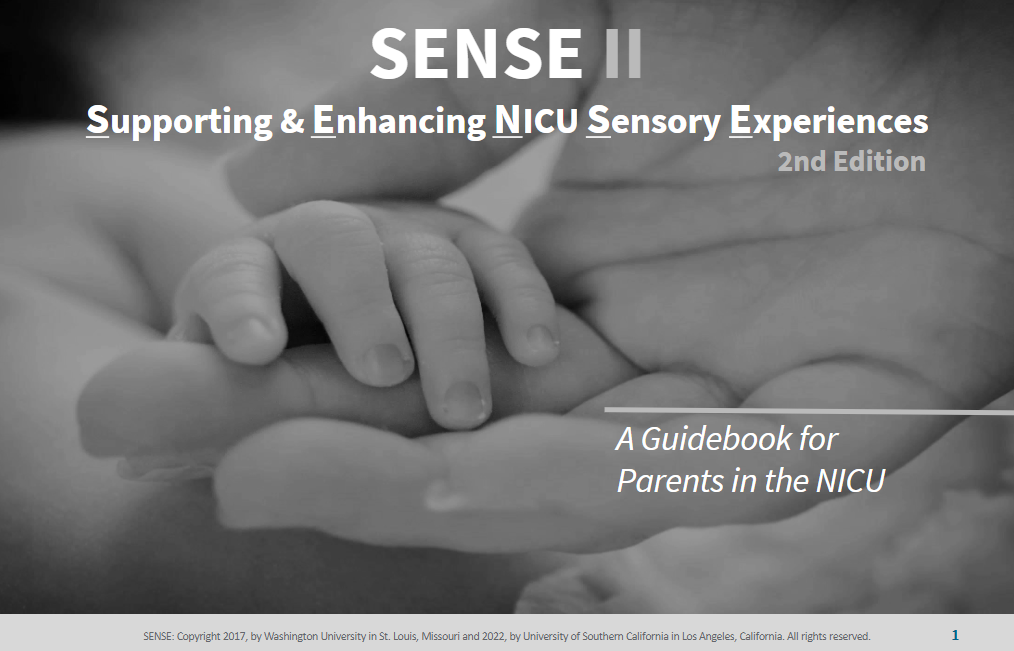In July 2022, the NICU Therapy Lab at the University of Southern California launched the Supporting and Enhancing NICU Sensory Experiences, 2nd edition (SENSE-II). The SENSE program was developed by Bobbi Pineda, Ph.D., OTR/L, CNT and Joan Smith, PhD, RN, NNP-BC. It was designed to engage caregivers in providing positive sensory exposures to their hospitalized infants to improve the NICU environment, foster parent-child interaction, and optimize infant brain development and outcomes.
Initially launched in 2017, the SENSE program is implemented with guidance from a healthcare professional. Most of the time, a neonatal therapist serves as the SENSE Administrator and educates caregivers about the program, assesses the infant’s tolerance, and makes adaptations and advances the program as the infant matures and heals. A core component of the program is the parent educational materials that define NICU terminology, emphasize the importance of parental presence, and summarize infant stress cues. These materials also outline strategies for daily positive sensory exposures based on postmenstrual age for each sensory system, with a recommended amount (or dose) of each evidence-based intervention.

The acceptability, efficacy, and outcomes of the original SENSE program have been investigated by Dr. Pineda and others. The SENSE program is feasible to implement in a high acuity NICU, it increases parent engagement, and the earlier the program is started, the better the results. There are publications relating the SENSE program to improved maternal confidence and infant neurobehavioral outcomes. The SENSE program has been introduced to over 400 hospitals in the United States and across the world since the inaugural launch.
To ensure infants receive programming that incorporates emerging evidence in NICU practices, routine revisions to the SENSE program are imperative. SENSE-II builds upon the evidence utilized in the original program, while capitalizing on a recent integrative review of sensory-based interventions in the NICU with new evidence that has emerged over the past 5 years since the original program was developed. A SENSE advisory team, made up of individuals with personal and professional expertise in the NICU, was engaged to provide stakeholder input on the revisions until near consensus was achieved.
What has changed from SENSE to SENSE II? There are updates to terminology (including gender neutral language), material organization, and formatting to enhance the clarity of the content. Changes to the visual and kinesthetic domains include providing a wider range of acceptable lux levels during daytime cycling, removing the suggestion of a dark environment to instead focus on the need to protect the infant from direct and bright lights, providing opportunities for visual tracking after 34weeks postmenstrual age, and offering position changes to promote different sensory and motor experiences, including supervised tummy time starting by 34weeks postmenstrual age. There are also considerable additions to the Implementation and Administration Manual, based on provider feedback over the past 5 years, with more tips and strategies related to variations in practice across NICU settings.
What if we implemented the original SENSE program? Do we have to switch to SENSE II? When the two programs are held side-by-side, the differences may not be readily apparent. The original SENSE program remains evidence-based and appropriate for use, and there have been no identified safety concerns with continued use of the original program: nothing in the current evidence suggests anything in the original program is no longer appropriate to do. However, when a hospital is ready – perhaps timed with when ready to print more materials for use – switching over to SENSE II is recommended.
Dr. Pineda remains committed to regularly updating the SENSE program as the evidence regarding best practice for sensory exposures in the NICU is constantly evolving. She is also committed to increasing accessibility of this program by making it available at only the cost of production, with no financial gain from its distribution, and translating the program to other languages.
For more information about the NICU Therapy Lab, SENSE-II, and Dr. Pineda’s research, please visit chan.usc.edu/nicu/sense.
Want to learn more? There are now SENSE training workshops for individuals (offered quarterly) as well as for all staff at a specific hospital (with the date and content tailored to that hospital). Please visit https://nicutherapylab.com/lab.com/.


